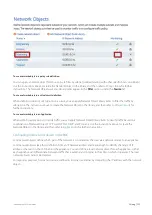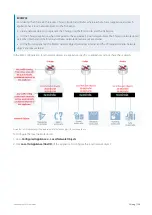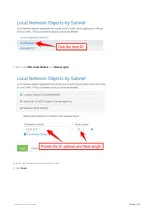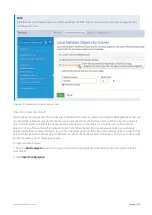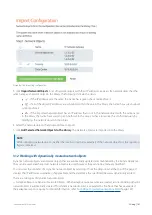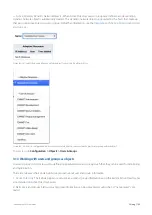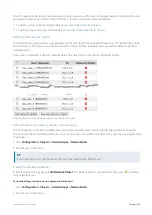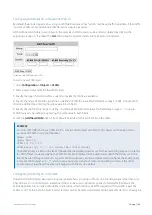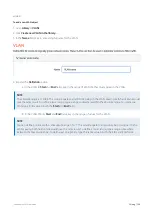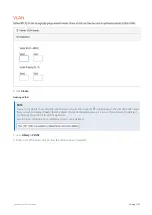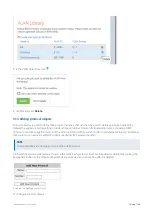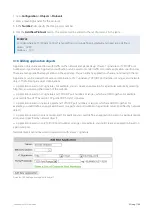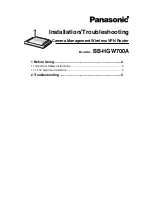
Exinda Network Orchestrator
3 Using
|
134
show network-object <name>
Creating Network Objects based on FQDN?
It is possible to configure network objects using fully-qualified-domain-names instead of IP addresses. Should it later
become necessary to change network settings on application servers, the Exinda appliance can then automatically
detect the change through DNS.
To configure a network object based on a fully qualified domain name, use the following commands:
>en
#conf t
(config) # network-object <NAME> fqdn <fully qualified domain name>
An Exinda appliance must be configured with a DNS server if it is to perform name resolution using FQDN. Each record
retrieved has a life cycle equal to the TTL (Time to live) defined for such a record. When the TTL is exceeded, Exinda
automatically refreshes the record to verify that the IP address has not changed. When appliance reboots occur, or
changes to DNS configuration, interface configurations, or link states on any interface, this causes an automatic refresh of
the network object. Should you need to perform a refresh, you can use the following command:
(config) # network-object <NAME> refresh
When the TTL is lower than 5 minutes, Exinda waits the full five minutes before attempting a refresh in order to avoid
DNS flooding.
CAUTION
Please be aware that if using a cluster of Exinda Appliances, the resolution for a given FQDN-Network Object, among
the different appliances, might be unexpected if any of the following conditions are met:
If the cluster members are using different DNS servers
If the name being resolved returns a different set of addresses for each resolve (i.e. 'load balancing')
Adding network objects in the EMC
A network object can be created in the Library for later use in other components and appliance groups, or it can be
created directly in the Optimizer Policy Tree, which also saves it to the Library. You can also import network objects into
the Library from an appliance.
To create and apply a network object
To create and apply a network object:
1.
Go to
Library > Network Objects
.
2.
Click
Create new network object in the library....
.
Содержание EXNV-10063
Страница 98: ...Exinda Network Orchestrator 2 Getting started 98 6 Click New The New Virtual Hard Disk wizard opens ...
Страница 99: ...Exinda Network Orchestrator 2 Getting started 99 7 Select VHDX as the Disk Format type and click Next ...
Страница 130: ...Exinda Network Orchestrator 2 Getting started 130 Screenshot 35 The life cycle of configuration status ...
Страница 369: ...Exinda Network Orchestrator 4 Settings 369 ...
Страница 411: ...Exinda Network Orchestrator 4 Settings 411 Screenshot 168 P2P OverflowVirtualCircuit ...
Страница 420: ...Exinda Network Orchestrator 4 Settings 420 Screenshot 175 Students OverflowVirtualCircuit ...
Страница 451: ...Exinda Network Orchestrator 4 Settings 451 ...


















